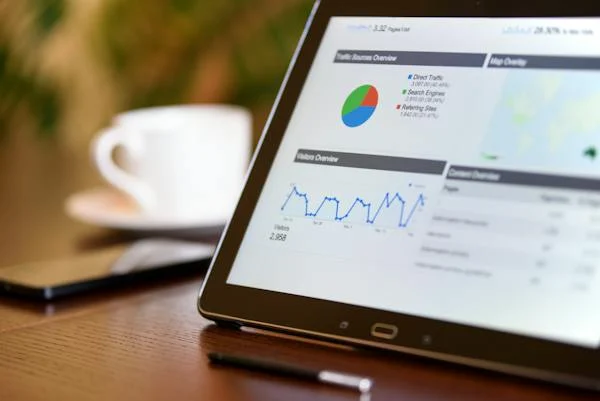Welcome to the ultimate showdown between two email marketing giants: Mailchimp and Mailigen. As we dive into 2024, the digital marketing landscape continues to evolve, and choosing the right tools for your marketing arsenal has never been more crucial. Whether you’re a small business owner, a digital marketer, or just curious about the latest in email marketing trends, this comparison will give you a clear picture of what Mailchimp and Mailigen offer. Let’s embark on this journey to discover which platform reigns supreme in 2024.
Ease of Use: A Critical Comparison
Mailchimp has always been known for its user-friendly interface, and it continues to excel in this area. For newcomers, Mailchimp offers a straightforward setup process. Its dashboard is intuitive, with most features accessible within a few clicks. The platform guides users through each step, from creating an email list to designing the first campaign. The drag-and-drop email builder is particularly noteworthy, allowing even the most novice users to create professional-looking emails without any design experience.
Mailigen, on the other hand, has made significant strides in improving its user interface. Historically, it was considered a bit more complex than Mailchimp, catering to users with a bit more experience in email marketing. However, recent updates have simplified its dashboard, making it more accessible to beginners. Mailigen’s strength lies in its robust list management capabilities. It offers more advanced segmentation features compared to Mailchimp, which is a big plus for marketers looking to target their emails more precisely.
Templates and Design
When it comes to templates and design, Mailchimp takes the lead. With an extensive library of email templates, it caters to various industries and occasions. These templates are not only visually appealing but also highly customizable. Users can tweak layouts, colors, fonts, and more to align with their brand identity. Mailchimp’s templates are also responsive, ensuring that emails look great on both desktop and mobile devices.
Mailigen offers a decent selection of templates, but its library isn’t as extensive as Mailchimp’s. That said, the available templates are of high quality and cater to a range of styles and preferences. Mailigen also allows for customization, though it can be slightly less intuitive than Mailchimp’s interface. Where Mailigen shines is in its ability to create dynamic content based on subscriber data, offering a more personalized email experience.
Automation and Workflow
Both Mailchimp and Mailigen offer powerful automation features, but they approach it differently. Mailchimp’s automation tools are designed for ease of use. Users can set up basic automated campaigns like welcome emails, birthday messages, or follow-up sequences without much hassle. Mailchimp also offers pre-built workflows that can be customized according to the user’s needs, making it easy to get started with email automation.
Mailigen takes a more sophisticated approach to automation. It offers more advanced options for setting up automated workflows. This is particularly useful for marketers who want to create complex, multi-step email sequences based on subscriber behavior or other triggers. While this might be a bit overwhelming for beginners, it’s a powerful feature for seasoned marketers.

Related: Check out our free SEO suite

Analytics and Reporting: Measuring Success
Understanding Your Campaign’s Performance
Mailchimp’s analytics are robust and user-friendly, providing a comprehensive overview of your email campaign’s performance. It offers key metrics like open rates, click-through rates, and subscriber activity, presented in an easy-to-understand format. Mailchimp also provides insights into how your campaigns perform on different devices and compares your performance against industry averages. This data is invaluable for tweaking your strategies and improving future campaigns.
Mailigen also offers detailed analytics, but it goes a step further in some areas. In addition to the standard metrics, it provides more in-depth analysis of subscriber behavior. This includes tracking how subscribers interact with your emails over time, which can be crucial for long-term strategy planning. Mailigen’s ability to integrate with Google Analytics is a significant advantage, offering a more holistic view of how your email campaigns influence your overall digital marketing efforts.
A/B Testing and Optimization
Both platforms offer A/B testing, but there are some nuances in their approaches. Mailchimp’s A/B testing is straightforward and easy to set up. Users can test different elements like subject lines, content, and send times to see what resonates best with their audience. The results are presented clearly, helping users make informed decisions about their email strategies.
Mailigen allows for more complex A/B testing scenarios. You can test multiple variables simultaneously, giving you a more granular understanding of what works and what doesn’t. This is particularly useful for advanced users who want to optimize every aspect of their email campaigns.
Real-time Analytics and Reporting
In today’s fast-paced digital world, real-time data is crucial. Mailchimp provides real-time reporting, allowing you to see how your emails are performing as soon as they hit your subscribers’ inboxes. This immediacy can help you make quick adjustments if something isn’t working as expected.
Mailigen also offers real-time analytics, but it excels in the way it presents this data. The platform provides a more detailed breakdown of real-time interactions, which can be incredibly useful for understanding immediate subscriber engagement and behavior.
Pricing Plans: Balancing Cost and Features
When it comes to choosing an email marketing tool, pricing is a crucial factor. Both Mailchimp and Mailigen offer various pricing tiers, catering to different needs and budgets. However, their pricing structures differ significantly, and understanding these differences is key to making an informed decision.
Mailchimp
- Free Plan: Available with basic features, suitable for up to 2,000 contacts and 10,000 sends per month with a daily limit of 2,000.
- Essentials Plan: Starting at around $9.99/month, this plan includes all email templates, A/B testing, custom branding, and support for up to 50,000 contacts.
- Standard Plan: Starting at approximately $14.99/month, this offers additional features like retargeting ads, advanced insights, and automation tools, catering to up to 100,000 contacts.
- Premium Plan: Starting from $299/month, aimed at larger businesses, offering advanced segmentation, multivariate testing, and unlimited seats and role-based access.
Mailigen
- Pricing Structure: Based on the number of subscribers.
- Basic Plans:
- Up to 500 subscribers: Starts at approximately $10/month.
- Up to 2,500 subscribers: Starts at approximately $25/month.
- Up to 5,000 subscribers: Starts at approximately $40/month.
- Higher Volume Plans:
- Up to 10,000 subscribers: Pricing available upon request.
- Up to 25,000 subscribers and more: Custom pricing.
Mailchimp operates on a sliding scale pricing model, which adjusts based on the number of subscribers you have. This can be both a benefit and a drawback. For small businesses with a limited number of subscribers, this means lower costs. However, as your subscriber list grows, so does your expense. Mailchimp does offer a free tier, which is a great starting point for small businesses or individuals just getting into email marketing. The free plan, though limited in features, provides enough functionality to get a good feel for the platform.
Mailigen also offers a scalable pricing model, but with a slightly different approach. Its plans are more focused on the features you get at each level, rather than just the number of subscribers. This can be particularly advantageous for businesses that need advanced features but don’t necessarily have a large subscriber list. Mailigen’s pricing is generally considered to be more affordable than Mailchimp’s, especially at higher tiers, making it an attractive option for budget-conscious businesses.
Feature Access and Limitations
With Mailchimp, as you move up the pricing tiers, you gain access to more advanced features like multi-step journeys, behavioral targeting, and advanced analytics. However, it’s important to note that some features, which could be crucial for your marketing strategy, are locked behind higher-tier plans.
Mailigen, in contrast, offers a more uniform feature distribution across its pricing plans. Even at lower tiers, you have access to most of the platform’s capabilities, including automation and advanced segmentation. This makes it a compelling choice for businesses that need these advanced features but aren’t ready to commit to a higher-tier plan.
Cost-Effectiveness for Different Business Sizes
For small businesses or startups, Mailchimp’s free tier or lower-tier plans can be a great starting point. They offer enough functionality to run effective campaigns without a significant financial commitment. As your business grows, you can scale up your plan to access more features.
For medium to large businesses, or those with specific email marketing needs, Mailigen’s pricing structure can be more cost-effective. Its approach of offering a comprehensive set of features across all plans means you don’t have to pay significantly more just to get access to one or two advanced features.
Integrations: Expanding Your Marketing Ecosystem
In the digital marketing world, the ability to integrate with other tools and platforms is essential. Both Mailchimp and Mailigen understand this and have made efforts to ensure their platforms can seamlessly connect with a wide range of services.
Mailchimp boasts a vast array of integrations. From CRM (Customer Relationship Management) systems like Salesforce to eCommerce platforms like Shopify, Mailchimp connects with over 200 apps and services. This extensive integration ecosystem makes it a versatile choice for businesses that use a variety of tools. For instance, connecting Mailchimp with your eCommerce platform can help you create targeted, behavior-based campaigns that drive sales.
Mailigen also offers a good range of integrations, though not as extensive as Mailchimp’s. It covers all the essential bases, including integrations with CRM systems, eCommerce platforms, and social media tools. Mailigen’s strength lies in the depth of its integrations, particularly with CRM systems, which allow for sophisticated data synchronization and targeted email strategies based on detailed customer insights.
API Access and Custom Integration
For businesses with specific integration needs, both platforms offer API (Application Programming Interface) access. Mailchimp’s API is well-documented and robust, allowing for custom integrations and the ability to tailor the platform to your unique business processes.
Mailigen also provides API access, which is user-friendly and comprehensive. This allows businesses with development resources to create custom integrations, ensuring that Mailigen fits perfectly into their existing technology stack.
Plug-and-Play vs. Custom Solutions
Mailchimp shines in its plug-and-play integrations, making it easy for businesses without extensive technical resources to connect it with other tools. The vast number of available integrations means that most users will find the connections they need without much hassle.
Mailigen, while offering fewer ready-made integrations, provides a more in-depth connection with the ones it does have. This is particularly beneficial for businesses that rely heavily on CRM data, as Mailigen’s integrations are designed to leverage this data for more effective email marketing.
Conclusion
As we’ve explored the features, pricing, integrations, and user-friendliness of Mailchimp and Mailigen, it’s clear that both platforms offer compelling advantages, but cater to slightly different needs.
Mailchimp stands out with its user-friendly interface, extensive template library, and a vast array of integrations, making it an excellent choice for small to medium-sized businesses and beginners in email marketing. Its sliding scale pricing model makes it accessible for businesses just starting out, while still offering the scalability needed for growth. The platform’s robust analytics and A/B testing capabilities ensure that you can fine-tune your campaigns for maximum impact.
Mailigen, on the other hand, offers a more cost-effective solution, particularly for businesses that require advanced features but have a limited subscriber list. Its strength in automation, detailed analytics, and in-depth CRM integrations make it a strong contender, especially for businesses that prioritize data-driven email marketing strategies. While it may have a steeper learning curve, its advanced features are worth the investment for more seasoned marketers.
In the end, both Mailchimp and Mailigen have their unique strengths, and the best choice depends on your specific needs and goals. As email marketing continues to evolve, staying informed and choosing the right tool will be key to your success in 2024 and beyond.
Read Next
- Mailchimp vs VerticalResponse: The Best Email Marketing Tool for 2024
- Mailchimp vs iContact: The Best Email Marketing Tool
- Mailchimp vs Keap: The Best Email Marketing Tool for 2024
- Mailchimp vs Zoho Campaigns: The Best Email Marketing Tool for 2024
- Mailchimp vs Automizy: The Best Email Marketing Tool for 2024






















Comments are closed.